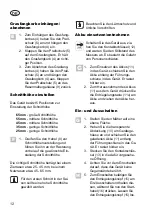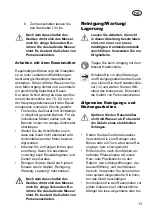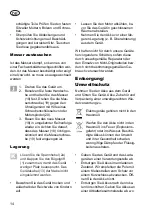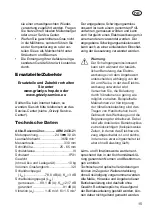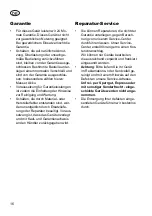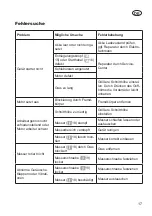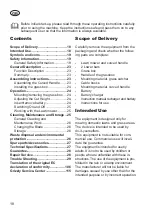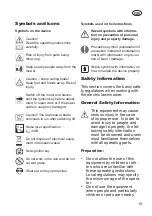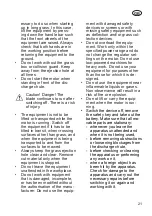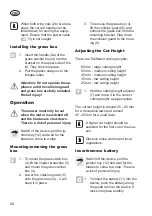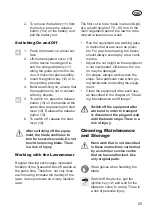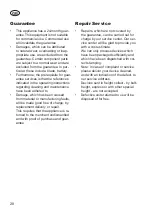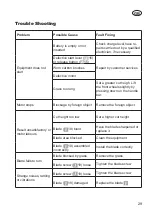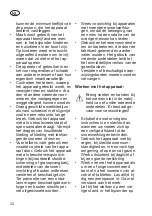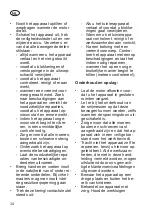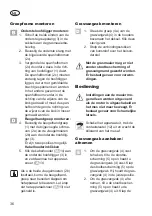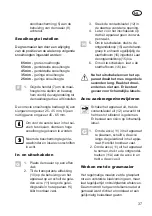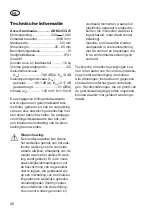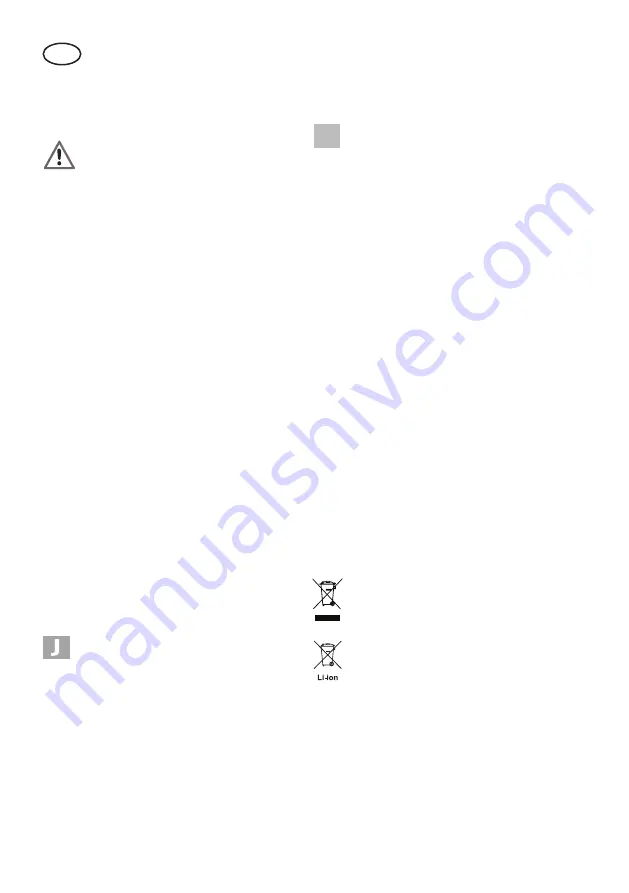
GB
26
General Cleaning and
Maintenance Work
Do not hose down the lawnmow-
er with water. Electric shock
hazard
• Always keep the equipment clean. To
clean, use a brush or cloth but no de-
tergent or solvent.
• After mowing, use a piece of wood
or plastic to remove adherent plant
remains from the wheels, ventilation
holes, ejection hole and blade area.
Do not use hard or pointed objects, as
these may damage the blade.
• Before each use, check the lawnmow-
er for obvious defects such as loose,
worn or damaged parts. Check that
all nuts, bolts and screws are sitting
firmly.
• Check the covers and protective de-
vices for damage and check that they
are sitting correctly. Replace them if
necessary
Changing the Blade
If the blade is blunt, it can be sharpened
by a specialist workshop. If the blade is
damaged or showing signs of imbalance,
it must be replaced
1. Turn the equipment over.
2. Use sturdy gloves and hold the
blade firmly (18).
Turn the blade screw (19) anti
-
clockwise off of the motor spin
-
dle (20) using a screwdriver.
3. Install the new blade in the
reverse order. Ensure that the
blade (18) is positioned correct
-
ly and the screw (19) tightened
firmly.
Storage
K
Loosen the tensioning levers (2a)
and fold down the handle bar (1)
so the equipment takes up less
space. Ensure that the cable (13)
is not caught.
• Keep the equipment dry and out of
reach of children.
• Allow the motor to cool before storing
the equipment in a confined space.
• Before a longer period of storage (e.g.
over winter), remove the battery from
the equipment.
We will not be liable for damages caused
by our equipment where these are caused
by improper repair or the use of non-
original parts or by use other than for the
intended purpose.
Waste disposal and envi-
ronmental protection
Remove the battery from the device and
take the device, battery, accessories and
packaging for environmentally friendly
recycling.
Machines do not belong with do-
mestic waste.
Do not dispose of the device with
the battery installed in household
waste, fire (risk of explosion) or
water. Damaged batteries may
damage the environment and your
health if toxic fumes or liquids leak
out.
Summary of Contents for ARM 2433-21
Page 2: ...2 11 17 7 6 4 3 3 2 1 2b 2a 3 9 10 5 10 13 15 16 14 11 12 8 4 2c 2c 4a 2a ...
Page 3: ...3 10 11 12 11a 7 5 4 9 15 16 17 18 19 20 11 4 2b 1 3 13 ...
Page 112: ...112 ...
Page 114: ...114 20181015_rev00_mt ...
Page 116: ......

